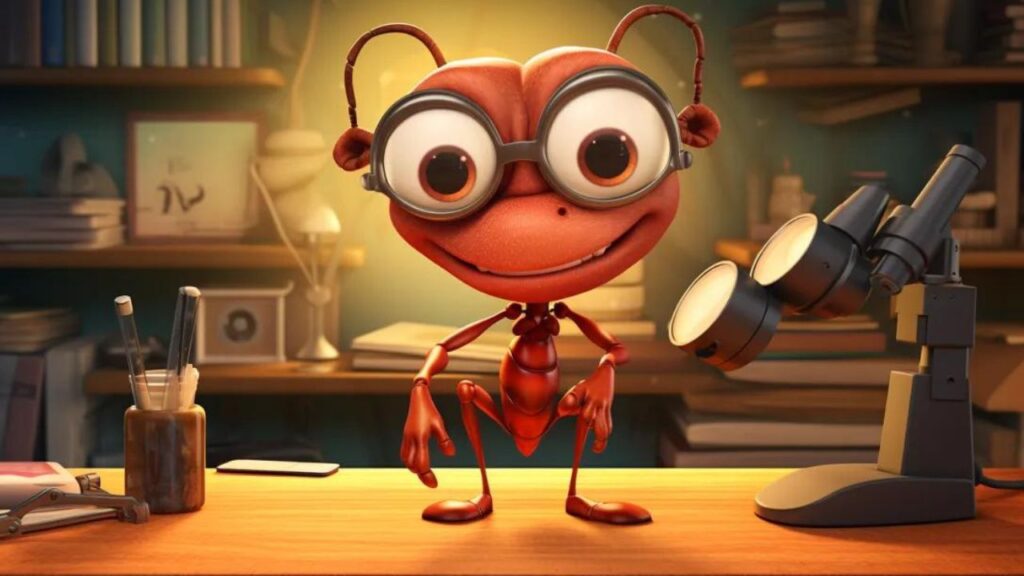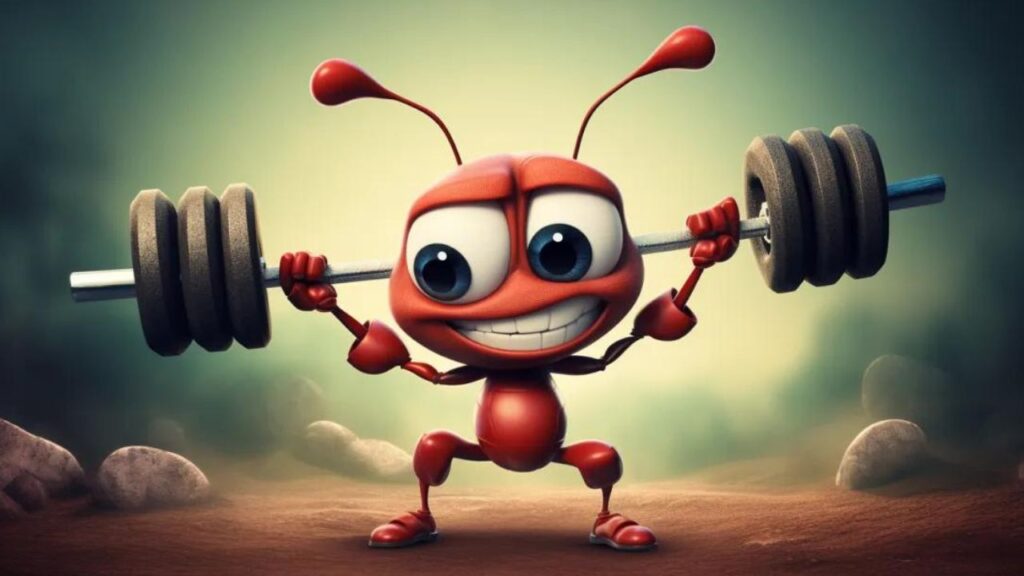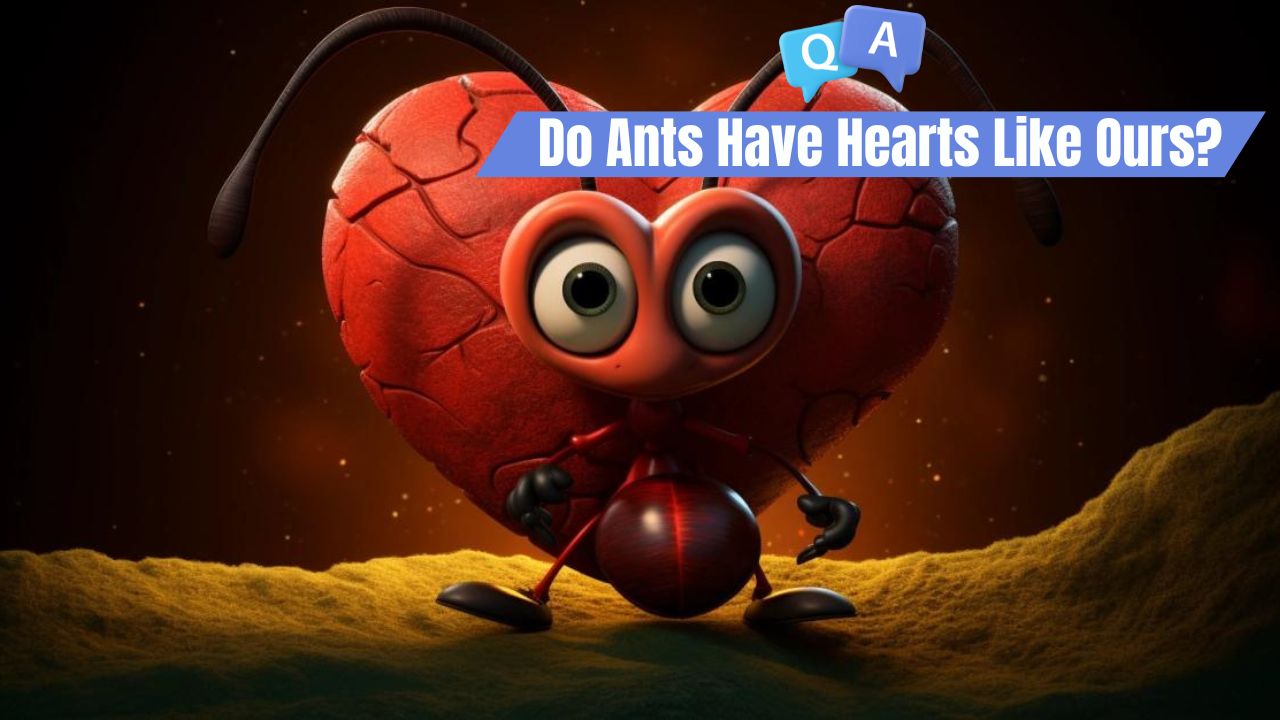TL;DR Summary
Ants possess an open circulatory system centered around a long, tube-like dorsal vessel, which functions similarly to a heart but is structurally and functionally different from human hearts. This system efficiently circulates hemolymph (a fluid akin to blood) throughout their bodies, supporting their active lifestyles and complex behaviors. Unlike humans, ants do not use their circulatory system for oxygen transport, which is handled separately by a network of tracheae. This efficient circulatory mechanism is a remarkable adaptation for their size and needs, showcasing the diversity and ingenuity of evolutionary biology. So, while ants do not have hearts in the traditional sense, they have a unique and effective system that performs similar vital functions.
Greetings, fellow nature enthusiasts and curious minds. I am Professor Abigail Antenna, a devoted myrmecologist, and today, I invite you to join me in exploring one of the most fascinating aspects of ant biology: their circulatory system. A common question I encounter is, “Do ants have hearts?” This question opens up a world of intrigue regarding the anatomy and physiology of these tiny, yet complex creatures.
A Glimpse into Ant Anatomy
- Unveiling Miniature Wonders: Ants, despite their small size, have intricate anatomical structures that support their survival and thriving colonies. Their bodies are segmented into the head, thorax, and abdomen, each part housing different vital systems.
- Beyond the Exoskeleton: Beneath their tough exoskeletons lies a network of organs and systems quite different from our own, yet equally fascinating. Understanding these systems is crucial to appreciating how ants live, work, and interact with their environment.
- The Heart of the Matter: Ant Circulation
- Do Ants Have Hearts? To answer this, we delve into the ant’s circulatory system. Unlike humans, ants have an open circulatory system, which functions differently from the closed circulatory systems found in vertebrates.
- The Dorsal Vessel: Instead of a heart as we know it, ants have a long, tube-like structure called the dorsal vessel that runs along the length of their body. This structure performs many of the same functions as a heart.
Importance of Understanding Ant Physiology
- Insights into Insect Biology: Studying ant physiology, including their circulatory system, offers valuable insights into the broader field of insect biology. It helps us understand how these creatures have adapted to their roles as pollinators, decomposers, and integral parts of their ecosystems.
- Implications for Myrmecology: For myrmecologists, understanding how ants’ bodies work is essential for comprehending their behaviors, social structures, and interactions with the environment.
- Broader Ecological Impact: Ant physiology, including their circulation, impacts not only their own survival but also the ecosystems they inhabit. Their efficiency in performing various ecological roles partly stems from how their bodies are designed and function.
Join me as we explore further into the intriguing circulatory system of ants, shedding light on the remarkable adaptations that allow these insects to be among the most successful species on our planet. We’ll discover that the question of whether ants have hearts leads us to a deeper appreciation of the complexity and efficiency hidden within these small creatures.
The Circulatory System of Ants

In my journey through the world of ants, one of the most fascinating aspects I’ve studied is their unique circulatory system. This system is markedly different from what we find in humans and other vertebrates, showcasing the incredible diversity of life’s biological mechanisms.
Open Circulatory System Explained
- Basic Mechanics: Ants, like many other insects, possess what is known as an open circulatory system. In this system, instead of blood being enclosed within vessels, it flows freely within the body cavity, also known as the hemocoel.
- Hemolymph: The fluid that circulates in an ant’s body is called hemolymph, which is analogous to blood in vertebrates. Hemolymph not only transports nutrients and waste products but also plays a crucial role in thermoregulation and internal pressure maintenance.
- Simpler but Efficient: While this system may seem rudimentary compared to the closed circulatory systems of mammals, it is remarkably efficient for the size and lifestyle of ants. It adequately meets their metabolic needs and supports their high-energy activities.
Dorsal Vessel Functionality
- Ant ‘Heart’: The dorsal vessel, running along the top of the ant’s body, is the closest equivalent to a heart. It’s a long, tube-like structure that pumps hemolymph from the rear of the ant’s body toward the head.
- Pumping Mechanism: The dorsal vessel contracts rhythmically, which helps circulate the hemolymph throughout the ant’s body. This contraction is somewhat akin to a heartbeat, pushing the hemolymph into the head and then allowing it to flow back toward the abdomen.
- Oxygen Distribution: Unlike in humans, where blood is crucial for oxygen transport, ants and other insects don’t use their circulatory system for oxygen delivery. Instead, oxygen is delivered directly to their tissues through a separate system of tracheae.
Differences from Human Hearts
- Structure and Complexity: The most obvious difference is in structure and complexity. Human hearts are multi-chambered and work in a closed system, while the ant’s dorsal vessel is a single tube in an open system.
- Functionality: In humans, the heart is essential for oxygenating the body by pumping blood through lungs and tissues. In ants, the dorsal vessel’s primary function is the circulation of nutrients and hormones, as oxygen is delivered through a different mechanism.
- Relative Size: Another difference is relative size. An ant’s dorsal vessel is proportionally larger compared to its body size than a human heart. This size difference is a necessity, given the ant’s open circulatory system and the need to ensure hemolymph reaches all parts of their body.
Understanding the circulatory system of ants provides a window into the remarkable adaptations that these insects have developed. Their simple yet effective system is perfectly suited to their small size and energetic lifestyle, demonstrating once again that nature finds diverse ways to solve life’s biological challenges.
How Ants Pump Blood

Delving deeper into the circulatory system of ants as a myrmecologist has been a journey full of surprises and marvels. Understanding how ants circulate their hemolymph (or what can be loosely termed as ‘blood’) reveals much about their physiology and survival strategies.
The Role of the Dorsal Vessel
- Primary Circulatory Organ: The dorsal vessel in ants is the linchpin of their circulatory system. Running along the length of their body, this tube-like structure functions similarly to a heart in vertebrates.
- Pumping Mechanism: The dorsal vessel pulsates rhythmically, driving the flow of hemolymph. These contractions propel the hemolymph forward from the abdomen towards the head. This process is crucial for distributing nutrients and hormones throughout the body.
- Segmented and Efficient: The dorsal vessel is segmented, with valves that ensure unidirectional flow of hemolymph. This segmentation aids in the efficient pumping and distribution of hemolymph, even in the absence of a complex, multi-chambered heart.
Movement and Circulation
- Muscular Contractions: The ant’s movement facilitates circulation. As ants move, their muscles contract, which helps to push the hemolymph around their body. This mechanism is particularly effective in an open circulatory system, where the fluid is not confined to vessels.
- Passive Flow: After being pumped by the dorsal vessel, the hemolymph seeps back passively towards the abdomen. This passive return flow is aided by the ant’s regular movement and the relatively low pressure in the hemocoel.
- Effect of Gravity: In ants, gravity has a lesser impact on circulation compared to larger animals due to their small size and the open nature of their circulatory system. This allows for more flexibility in how they move and orient their bodies.
Oxygen Transport in Ants
- Separate from Circulation: Unlike in humans, oxygen transport in ants occurs independently of their circulatory system. They rely on a network of tracheae, which are tiny tubes that transport oxygen directly to their tissues.
- Tracheal System Efficiency: This tracheal system is highly efficient for ants’ small size, allowing for direct and rapid oxygen delivery. The oxygen diffuses directly from the air into their body tissues, bypassing the need for it to be carried by hemolymph.
- Ventilation through Movement: The movement of ants also aids in ventilating their tracheal system. The physical activities of ants help pump air in and out of the tracheae, ensuring a continuous supply of oxygen to their vital organs.
Understanding how ants pump ‘blood’ and transport oxygen offers fascinating insights into their biology. Their simplified yet efficient systems are marvelously adapted to their size and lifestyle, providing them with all the necessary functions for survival. The way ants circulate hemolymph and breathe highlights the diverse evolutionary strategies of life on Earth, each tailored to the unique demands of different organisms.
Ant ‘Hearts’ and Their Efficiency

In my extensive research into ant physiology, the efficiency of their circulatory system, particularly their so-called ‘hearts’, stands out as a testament to evolutionary ingenuity. Ants, with their tiny frames, have developed a circulatory system that is both simple and remarkably effective.
Efficiency in a Tiny Frame
- Optimized for Size: The dorsal vessel in ants, functioning as their heart, is incredibly efficient for their small size. This efficiency is essential because ants require a constant flow of nutrients and hormones to sustain their high-energy activities.
- Simplicity and Functionality: The simplicity of the ant’s heart – a single, tube-like structure – is key to its efficiency. Without the need for complex chambers or valves as in larger animals, ants maintain a circulatory system that is well-suited to their diminutive size and less energy-intensive.
- Supporting the Colony’s Demands: The efficiency of their circulatory system is crucial in supporting the colony’s demands. Whether it’s foraging, constructing the nest, or caring for the young, ants rely on their dorsal vessel to keep them active and healthy.
Adaptations for Survival
- Resilience to Physical Stress: Ants often face physical stressors such as changes in pressure when they burrow or climb. Their circulatory system is adapted to withstand these stresses, ensuring continuous circulation under various conditions.
- Rapid Response Capability: The direct and efficient circulation of hemolymph allows ants to respond quickly to environmental changes and threats, which is vital for their survival in the dynamic ecosystems they inhabit.
- Thermal Regulation: Despite their small size, ants can regulate their body temperature to some extent through their circulatory system. The flow of hemolymph helps distribute heat throughout their body, aiding in thermal regulation.
The Role of Hemolymph in Ants
- More Than Just ‘Blood’: Hemolymph in ants serves multiple functions. Besides nutrient transport, it plays a role in hydraulic limb extension, allowing for movements like the opening of mandibles or the extension of legs.
- Immune Function: Hemolymph also contains cells and molecules that play a role in the immune response, protecting ants from pathogens. This aspect is crucial for colony health, especially in densely populated nests.
- Hormonal Transport: Crucial to the ant’s development and social behaviors, hemolymph transports hormones throughout the body. These hormones regulate everything from growth and metamorphosis to the functioning of the reproductive system.
The circulatory system of ants, with its efficient ‘heart’ and multi-functional hemolymph, is a marvel of biological engineering. It encapsulates how evolution has tailored even the most fundamental physiological processes to meet the specific needs of different life forms. In ants, this efficiency is vital for their survival, underpinning the incredible feats of strength, endurance, and organization that these tiny creatures are known for.
Comparing Ant Hearts to Other Insects

In the realm of entomology, understanding the diversity in insect circulatory systems is key to appreciating the breadth of evolutionary adaptations. As I study ants and compare their circulatory systems to other insects, it becomes evident that there is a fascinating variety in how life sustains itself.
Shared Traits Among Insects
- Common Open System: Most insects, including ants, have an open circulatory system. This is characterized by the absence of a complex network of blood vessels and capillaries. Instead, the internal organs are bathed directly in hemolymph.
- Dorsal Vessel as a Heart Analog: Insects generally share the trait of having a dorsal vessel that functions as a heart. This long, tubular structure runs along the top of the insect’s body, pulsating to move hemolymph throughout the hemocoel.
- Hemolymph as a Multipurpose Fluid: Across different insect species, hemolymph serves multiple functions – from nutrient transport to playing a role in the immune response and hydraulic functions, much like in ants.
Unique Circulatory Adaptations
- Variations in Dorsal Vessel Structure: While the basic function of the dorsal vessel is consistent, its structure can vary. Some insects have a more segmented dorsal vessel, while others have additional muscles or valves that aid in circulation.
- Different Pumping Mechanisms: The way the dorsal vessel pumps hemolymph can differ among insects. Some may have more pronounced and regular contractions, while others have a less rhythmic pumping mechanism.
- Adaptations to Lifestyle: Insects have developed circulatory adaptations that suit their specific lifestyles. For instance, flying insects like bees have adaptations that support higher metabolic demands, while burrowing insects have systems that can withstand different pressures.
Evolutionary Insights from Ant Circulatory Systems
- Survival and Efficiency: The simplicity and efficiency of the ant’s circulatory system reflect an evolutionary path geared toward survival in diverse environments. This system supports their complex social structures and demanding physical activities.
- Evolutionary Flexibility: The variety in circulatory systems among insects, including ants, demonstrates evolutionary flexibility. It shows how different species have adapted their circulatory mechanisms to suit their ecological niches and biological needs.
- A Window into Insect Biology: Studying the circulatory system of ants, in comparison with other insects, provides insights into the broader principles of insect physiology and evolution. It highlights how even within a single phylum, life can adapt in myriad ways to ensure survival and reproduction.
In conclusion, comparing the circulatory systems of ants with other insects reveals a tapestry of evolutionary innovation. It’s a testament to the adaptability of life, showcasing how even within a seemingly simple system, there is a depth of complexity and specialization that ensures the thriving of countless species across our planet’s ecosystems.


